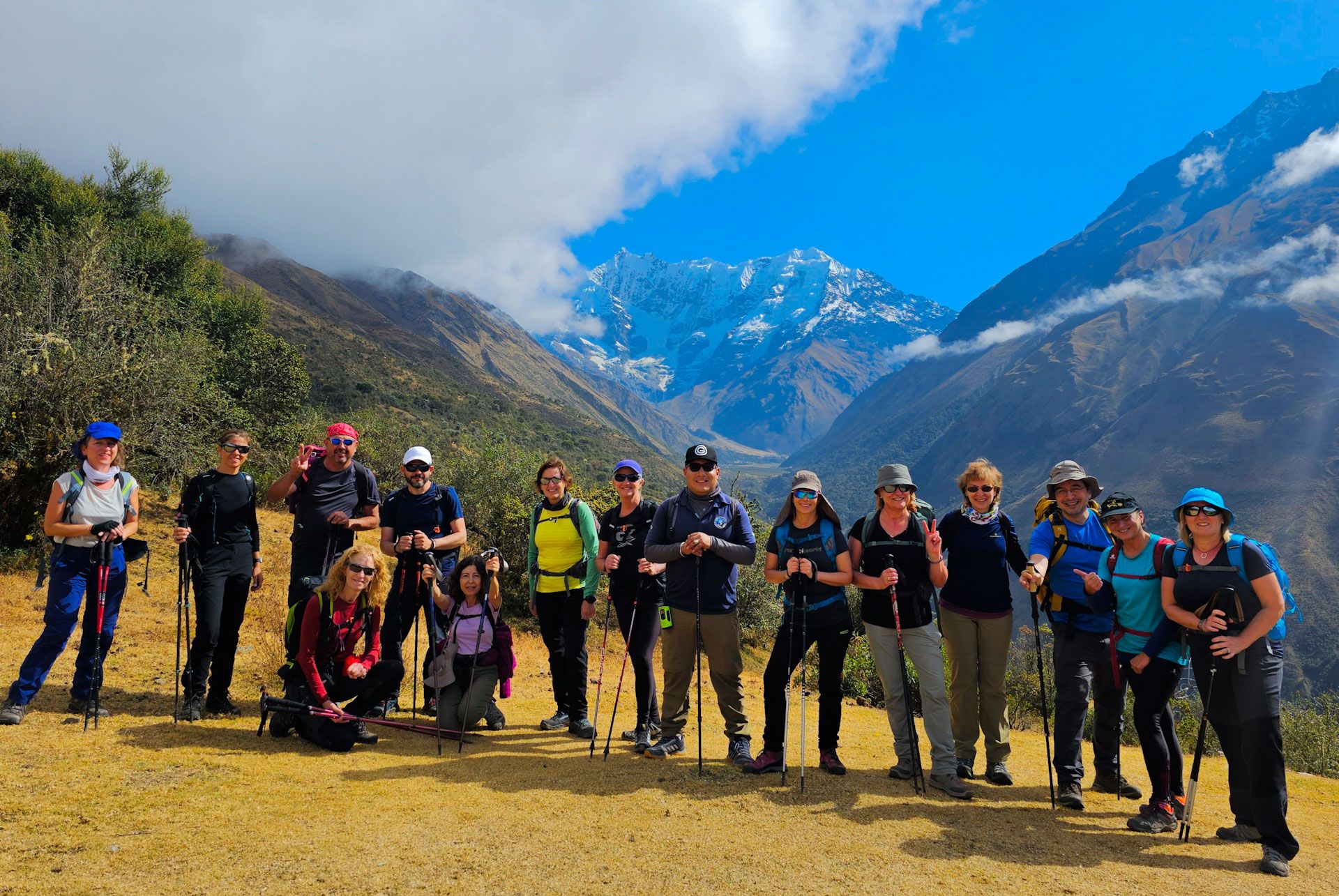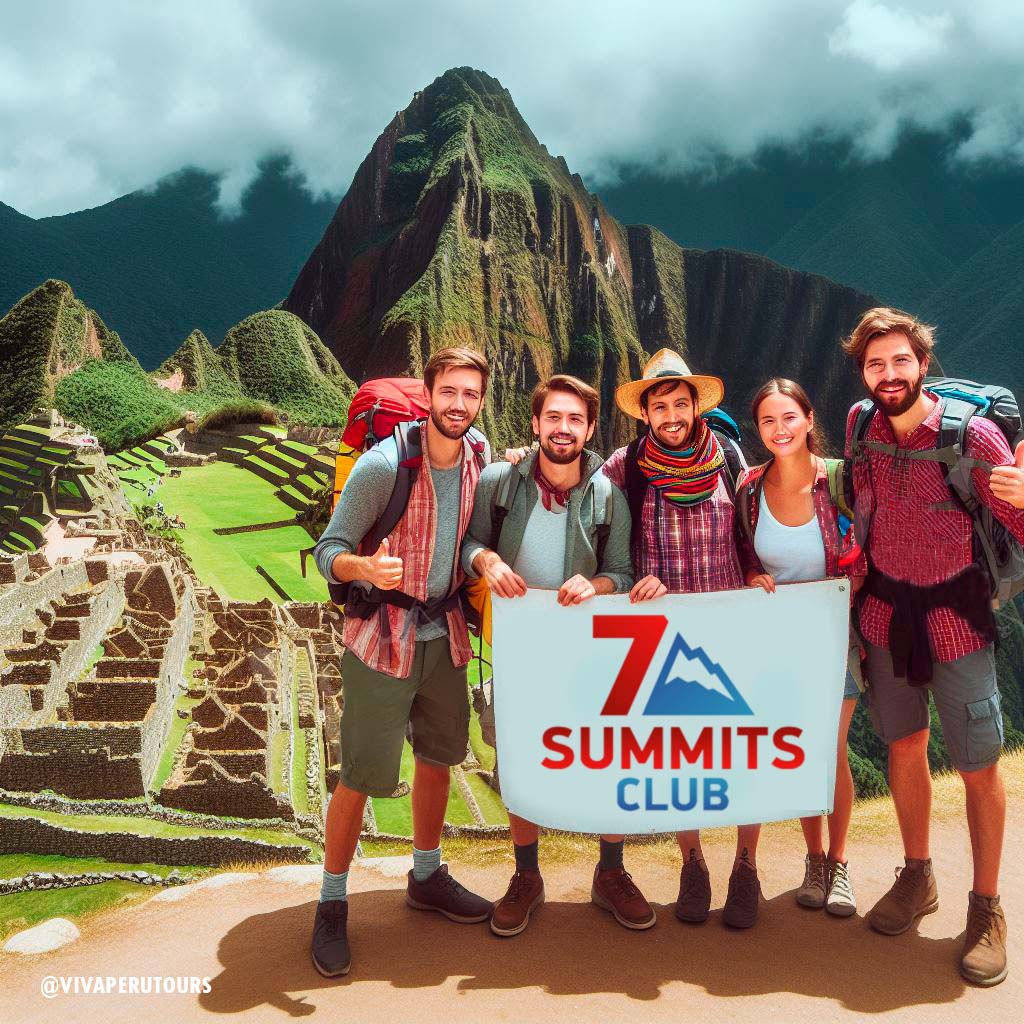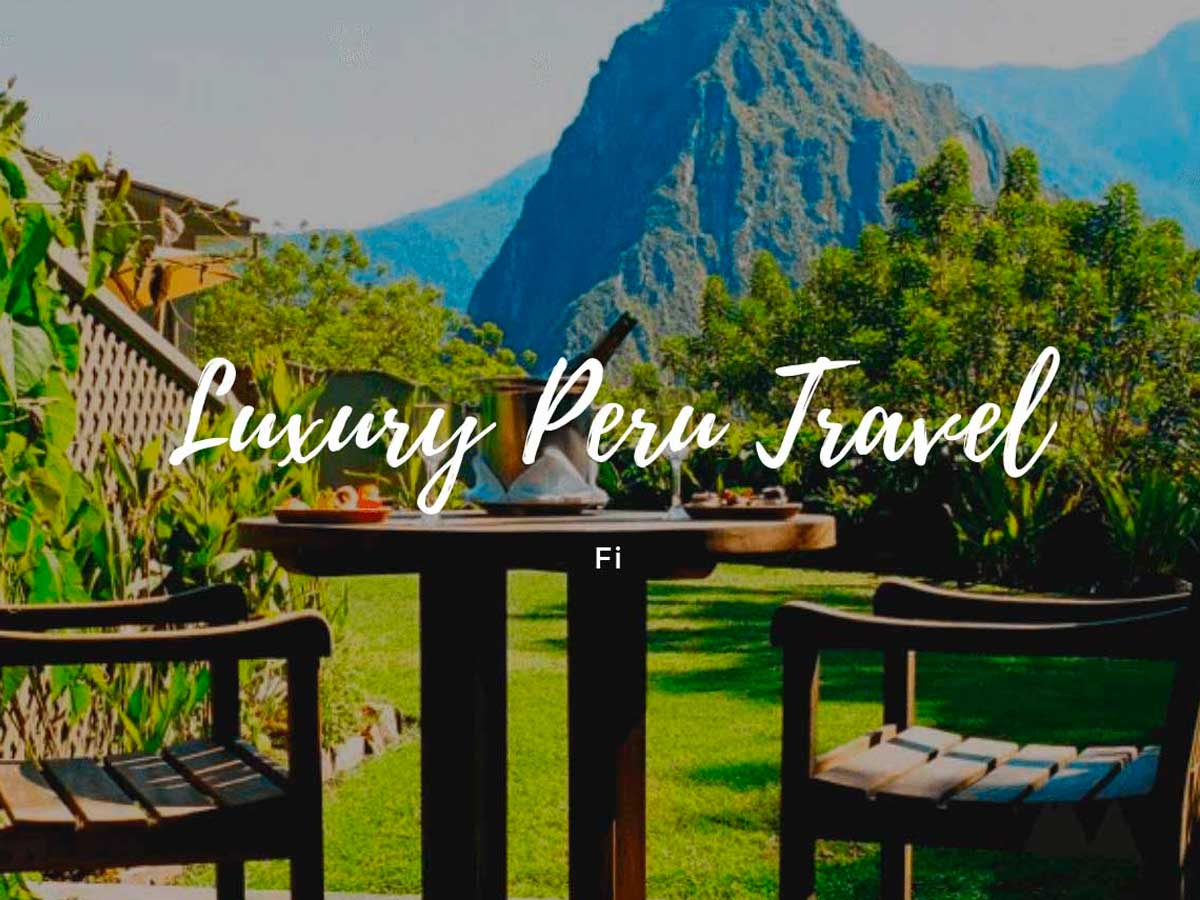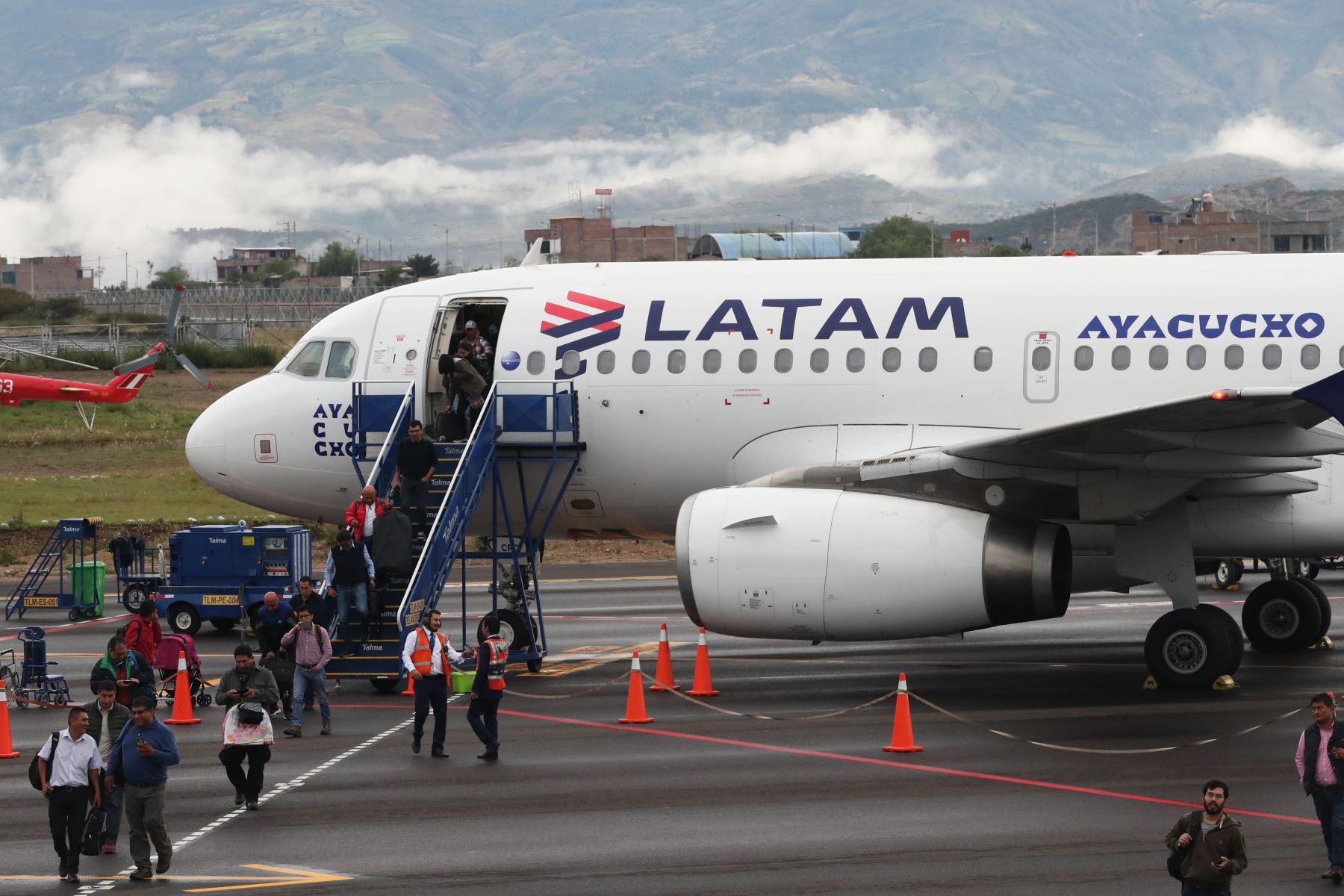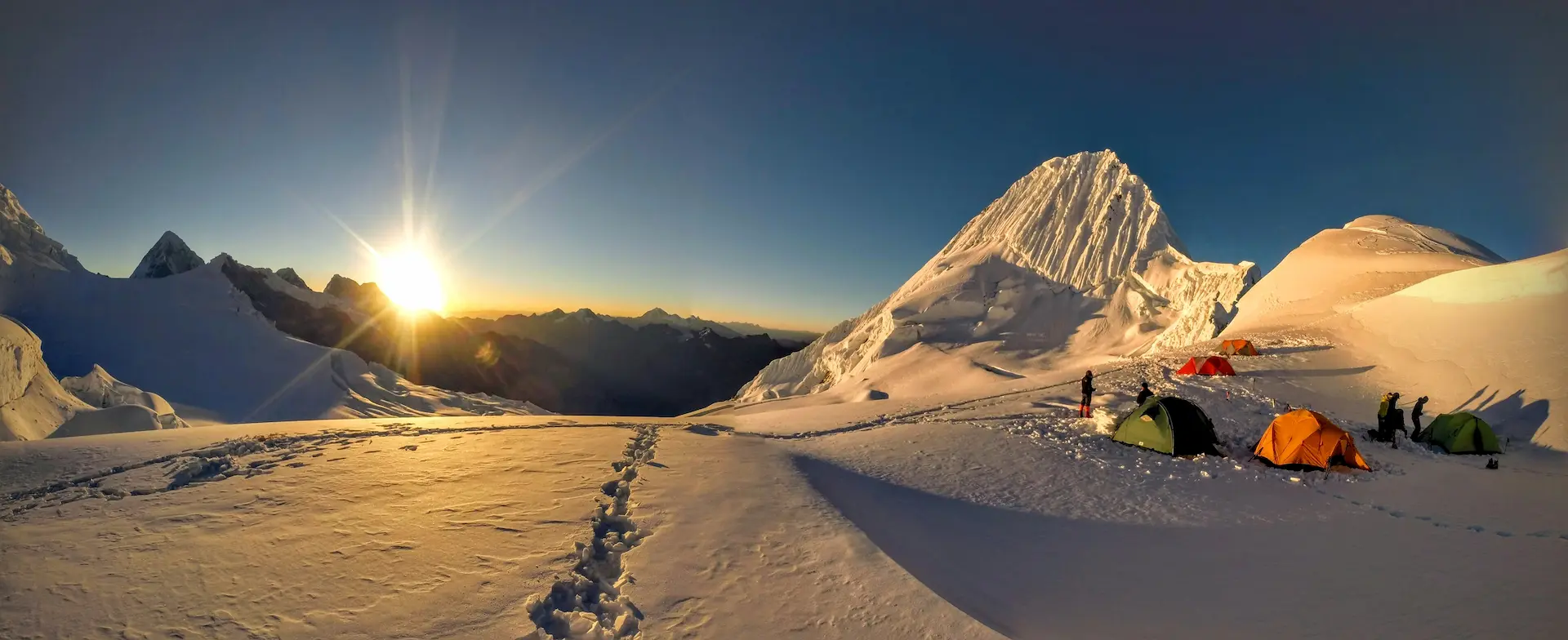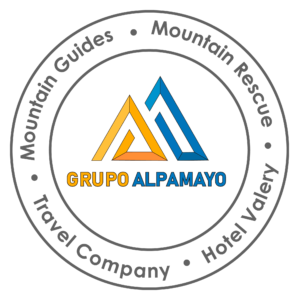Ultimate Salkantay Trekking Guide to Machu Picchu
After the Inca Trail , the Salkantay Trek is the second-most popular hike in Peru. It is also the most difficult hike to Machu Picchu, so you must be ready for any challenges you may encounter. It’s imperative to get ready for this expedition in advance; before traveling to Peru, you must routinely go on small hikes.
This article will assist you in selecting the right season to hike on this wonderful trek. At the same time, you will have an idea of the appropriate gear for the Salkantay Trek if you intend to hike it or have already made a tour reservation. I’ve been a tour guide on the Inca Trail for many years, so I know what visitors need to bring to get the most out of their experience. The complete Salkantay Trek packing list is provided below.
OVERVIEW
Most people have their hearts set on hiking to Machu Picchu. But many travelers who are planning to visit Peru are unaware that there are many other ways to get to this renowned Inca city tucked high in the Andes than just the Classic Inca Trail.
The Salkantay Trek is a trekking route in South America that can be used instead of the standard Inca Trail to go to Machu Picchu. It offers a distinctive fusion of culture and mysticism that the Peruvians have passionately preserved. It also offers a wonderful adventure and extraordinary natural beauty. At the highest points of Humantay Mountain, where the cold ice of the mountains meets the steamy heat of the Andes, the Salkantay Trek is regarded as one of the top 25 hikes in the world and is bordered by the ancient Machu Picchu National Park. It has a very interesting geography with a rich history, culture, and traditions. The Vilcanota Mountain Range contains two of the twenty-highest mountains in the Americas.
Salkantay Trek Facts
The distance of the Salkantay Trek is 62 kilometers long, assuming you start walking from the small village of Soraypampa to Aguas Calientes. However, different companies have their own routes or take a van on some parts of the route.
The Classic Trek begins near Soraypampa, and once you arrive, you have an extra hike to Humantay Lake, which is optional. It takes about 2 hours round trip.
Where is the Salkantay Trail?
From Cusco, it takes about four hours to travel to Sayllapata, near Mollepata district. It is located at 3,620 meters above sea level. And serves as the trek’s beginning point. You will meet your horsemen here; these are the folks who will take care of your main bag so that you only need to carry your dayback.
The typical path leads to Soraypampa, 3,960 meters (12,992 ft), a campground at the foot of the Salkantay Pass, in the north. Most groups will stop here and set up camp for the night before ascending to Humantay Lake and spending the night there.
Salkantay Trekkking difficulty
This hike is considered challenging. The difficulty comes from not the distance but the continuous altitude you will be trekking at during some portions of the hike. It is highly recommended that trekkers spend a couple of days in Cusco to acclimatize to the altitude.
As mentioned before, permits are not required to do the Salkantay trek. Thus, it is possible to do this trek on your own.
The most challenging section of this trek comes on the second day, which is also the longest day with more than 22km of hiking to reach the next campsite. On this day, you will reach over 4,630 meters (15,190 feet) at the Salkantay Pass, or the highest point. The accent goes gradually with following the horse pathway; the good thing is you will take your time, going slowly and steadily. The last 500 meters could be tough but not impossible, and with some deep breaths, you will do it.

Salkantay hike Elevation
When hiking through Salkantay, you will go up and down at different altitudes at different points of the trek. Each of these different points offers different views and scenery, making all of them (even the most difficult points) gratifying.
Highest elevation during the trek: 4,630 meters (15,190) – Salkantay Pass
Lowest elevation during the trek: 2,430 meters (7,972 feet) – Machu Picchu
How fit do I need to be to hike the Salkantay trek?
Salkantay trek is a moderately challenging hike. While being moderately fit and physically able to walk at least 20 kilometers (12.5 miles) at lower elevations is essential, preparing for high-altitude trekking is challenging. This is because you can’t predict how your body will react when it’s faced with these conditions, particularly as it’s not impacted by how fit, young, or healthy you are. In fact, even the fittest people can suffer horrible altitude sickness.
As a result, the best preparation for hiking the Salkantay trek is to arrive in Cusco, where we highly recommend spending at least two days before the trek begins to give your body time to acclimate. Get plenty of sleep, stay hydrated, and be sure to get some Diamox to help your body adjust.
Bes Time to hike the Salkantay Trek
You can trek the Classic Salkantay Trek all year around, but we recommend hiking it in the drier months from April to November. The days are warm, around 62°F (17°C), and cooler at night and in the early mornings, around 40°F (5°C). This path is all about the views of the snow-capped mountains and the verdant valleys that spread through the Andes below, and you’re far more likely to enjoy them without a cloud in sight in the drier months, April through November.
Salkantay Trek to Machu Picchu Packing List
This trek of Salkantay is the second most popular hike in Peru after the Inca Trail, it is also the most challenging hike to Machu Picchu, and you need to be prepared to face any obstacles during the trip. Preparing in advance for this trek is essential; you must regularly go on short hiking before coming to Peru.
Knowing precisely what to take to the Salkantay Trek is essential; you will take a backpack that you will carry with you all the time, then you will also have a duffle bag where you can put all your stuff up to 7 kilos. The rest of your luggage must stay in Cusco in your hotel or our office.
Hiking gear for Salkantay route to Machu Picchu
When it comes to finding the perfect backpack for hiking, there are a few things you need to take into consideration. The first is the size of the bag. You want to ensure that it is large enough to fit all your belongings but not too large that it becomes cumbersome to carry.
The second is the type of material the backpack is made from. You want something durable that will stand up to the elements but also lightweight so that you don’t end up lugging around a heavy pack. And finally, you want to ensure that the backpack has plenty of compartments and pockets so you can easily organize your belongings.
• Original passport (to enter Machu Picchu)
For this trek you must bring the actual passport with you on the trek, assuming you already have your passport and any appropriate visas (some nations let travelers to use national IDs instead of passports). You’ll need a secure, water-resistant location to keep it in your daypack; Ziploc bags work great for this.
Prior to your trip to Peru, confirm that your passport will still be valid for at least another six months.
• Fleece Jacket
Bring a warm fleece jacket with you. You should wear a layer that keeps you warm at night because the temperatures might dip fairly low. If the sun isn’t out, a fleece jacket is also fantastic for wearing during the day. When you need it or get cold, you should be able to pull this jacket out of your daypack easily and quickly.
• Waterproof Jacket
If you intend to visit Machu Picchu, a waterproof jacket is a need. If it rains or snows, the coat will keep you dry. Additionally, it is windproof, so you will stay warm even in chilly weather. To shield your head from the weather, the jacket must include a detachable hood.
• Hiking Pants
When selecting the best hiking pants for Machu Picchu, there are a few factors to take into account. First and foremost, the pants should be loose-fitting and comfy. Second, they ought to be constructed from strong materials that can survive heavy use. Thirdly, they ought to be light so that you don’t overheat while hiking. Fourth, they ought to contain a lot of pockets to hold all your necessities. Fifth, they ought to offer effective sun protection. Finally, they ought to be big enough to cover your undergarment. With its various climatic zones, the Salkantay journey is a fantastic fit for convertible pants.
• Baselayers
The cornerstone of your clothing system, your base layer, will have the biggest impact on how comfortable you are while hiking. Select a base layer that will wick away perspiration and keep you warm even when wet. We advise merino wool or synthetic textiles due to their resilience and capacity to control body temperature.
• Hiking Socks
For numerous reasons, hiking socks are vital. Your feet receive padding from them, which might aid in avoiding blisters. Additionally, they wick moisture away, preventing excessive perspiration on your feet. And in cold weather, they might aid in keeping your feet warm.
• Hat or Cap
If you plan to visit Machu Picchu, you should bring a hat to protect you from the sun. The greatest hats cover your face, neck, and shoulders with a broad brim. To avoid overheating, go for a hat made of permeable material. It’s also a good idea to wear a hat with a chin strap so it won’t blow away in the wind.
• Trekking T-shirts
Wearing the appropriate clothing is the best way to stay comfortable while trekking. An excellent trekking shirt should be constructed of wicking, breathable cloth. In order to prevent sunburn, it ought to have UPF protection. The shirt shouldn’t be too tight so it restricts your movement, but it shouldn’t be too loose that it catches on trees or rocks either.
• Hiking Boots
Make sure the ankle support and traction on your hiking boots are good. In order to be able to hike for extended periods of time without becoming exhausted, the shoes should also be cozy and light.
• Sneakers or Sandals
After long hours of hiking, you might want to remove the heavy boots; you will need something lite to wear at the campsites. Sandals are suitable for showering or in the hot springs.
• Bathing clothes
There are 2 hot springs on the Salkantay Trek; The Cocalmayo Hotsprings located in the Santa Teresa District and Aguas Calientes town. Make sure to take bathing suits if you plan to relax in the volcanic waters.
• Bennie or winter hat
A Bennie is a type of hat that is often worn in cold weather. It is usually made of wool or a different kind of warm fabric. Bennies are often worn in winter when it is cold outside. They are also famous for outdoor activities, like hiking and camping.
• Gloves
We recommend 2 types of gloves; Hiking gloves for the days, especially when using trekking poles, also you need warm gloves for the night.
• Trekking Poles
Trekking poles provide extra stability on uneven terrain and help to reduce stress on your legs and knees.
• Sunglasses
The sun can be intense, and the wet rocks’ glare can be blinding. If you’re not used to the altitude, the sun can make you feel dizzy and nauseous. Look for a pair of sunglasses with 100% UV protection that covers your entire field of vision.
• Quick dry towel
Make sure to pack a quick dry towel for the Salkantay trek. The air is very humid, and the temperatures can get relatively high, so you’ll want a towel that dries quickly. Quick dry towels are made from materials that absorb water quickly and then dry quickly. They’re usually lighter than regular towels, so they’re easy to pack.
• Sleeping bag
The temperatures can get pretty cold at night, so it’s essential to have good sleeping bags, rated at -10°C. They also come in different sizes, so you can find one that’s just right for you. And if you’re worried about packing too much, don’t worry – most sleeping bags can be easily rolled up and stored in a backpack. You can also rent us down-filled sleeping bags.
• Inflatable mattresses
We provide foam mattresses on all our tours. However, if you want an extra layer, you can rent or bring your inflatable mattress, make sure it is light, easy to pack, and small.

Is there any option to hike Huayna Picchu or Machu Picchu Mountains?
Yes, when you hike on the Salkantay Trek, you will visit Machu Picchu on the final day. After your guided tour, you will be able to climb Huayna Picchu Mountain or Machu Picchu Mountain. For these, you need to book in advance the ticket that allows you to climb one of these mountains. For Huayna Picchu Mountain, it takes 40–50 minutes to reach the summit, and for Machu Picchu Mountain, it takes about 1:20 hours only one way.
• Classic Salkantay Trek Itinerary
Day 1 – Cusco / Mollepata/Sayllapata / Soraypampa /
• Walking distance: 12 km (7.45 miles)
• Starting elevation: 3,620 m (11,318 ft)
• Highest Elevation: 3,960 m (12,992 ft)
• Humantay Lake Elevation: 4,200 m (13,779 ft)
• Difficulty: Moderate
Day 2 – Soraypampa / Salkantaypampa / Soyrococha / Salkantay Pass / Huayracmachay / Chaullay
• Hikking distance: 20 km 11.8 miles)
• Starting elevation: 3,960 m (12,992 ft)
• Highest Elevation: 4,630 m (15,190 ft)
• Campsite Elevation: 2,750 m (9,022 ft)
• Difficulty: Challenging
Day 3 – Chaullay /La Playa / Lucmabamba
• Walking distance: 18 km 11.2 miles)
• Starting elevation: 2,750 m (9,022 ft)
• Campsite Elevation: 2,400 m (7,874 ft)
• Difficulty: Easy
Day 4 – Lucmabamba / Hidroelectrica / Machu Picchu Village
• Trekking distance: 18 km 11.2 miles)
• Starting elevation: 2,400 m (7,874 ft)
• Highest Elevation: 2,800 m (9,186 ft)
• Campsite Elevation: 2,040m (6,693 ft)
• Difficulty: Easy
Day 5 – Machu Picchu Village / Machu Picchu / Cusco
• Walking distance:
• Starting elevation: 2,040m (6,693 ft)
• Highest Elevation: 2,430 m (7,972 ft)
• Campsite Elevation:
• Difficulty: Easy
The adventure to the most incredible trail begins with the sigle click «Book Your Trip»
